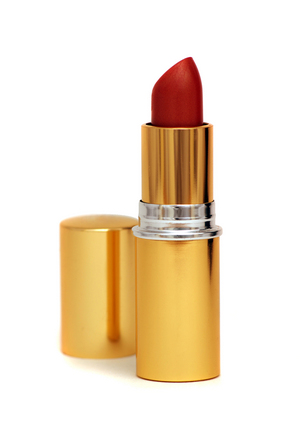Having donated blood a couple times in high school, I had always wanted to get back into doing it, but never did for a variety of probably lame reasons. Once I moved to Oregon I thought about it again, but then I heard about plasma donation. In the area where I was from in Michigan, there were no such centers. Eventually of course I went to check it out, and I have been donating twice a week as often as I can for a few months now. Note that this procedure is for ZLB Plasma, as it is the only plasma donation center I have been to, your experiences may vary if your center is different.
The basics about plasma:
Plasma is the liquid part of your blood that aids in controlling bleeding and infections, separate from the red blood cells and other cells in blood. It contains proteins and antibodies to aid in resisting disease and infection.
You “donate” blood temporarily, which is spun through some complicated process to separate plasma from blood. They keep your plasma and give you back your blood.
Plasma regenerates in 1-2 days.
Plasma gained from donations is used to fight hemophilia, as well as help treat burn and shock victims, in addition to other things.
Things to know about donating plasma:
The process is called plasmapheresis.
You can donate two times a week.
You want to eat a big meal the night before, as well as eating something satisfying shortly before you go in. It’s also sometimes a good idea to bring a sandwich or other snack if you’re going during the day and expect to waiting in line for an hour or two. Pasta is an especially recommended food for meals the night before donating.
Unhealthy foods such as fried chicken, pizza, and pop aren’t suggested. Pop especially is bad, as well as anything that contains caffeine, as it may be found in many delicious beverages but actually serves to dehydrate you.
A good night’s rest helps. 6-8 hours is ideal. Similar to how you want a lot of rest before you go in for a test in school or a long shift at work, proper sleep patterns always help. It’s even more important with plasma donation, since it’s about your body as well as your mind.
Patience and a positive attitude are paramount. You may have to wait in line for a couple hours depending on how busy it is. There is the regular line, and also the VIP line(which I will mention later), so take that into consideration. Bring a book or a mp3 player if it helps. And try to be positive and not think about how much the needle is going to hurt, the less you focus on it the less you will notice.
The most important step in plasma donation preparation is to drink fluids. Lots of them. Water is the best, but pretty much anything devoid of caffeine will work. I usually try to drink at least half a gallon of water the day before donating and several glasses before going in to donate. I also don’t drink a lot normally, so if you’re more well-hydrated you may need less preparation. Being dehydrated means you’re probably going to feel sick when you donate, and your hydration levels affect how long the donation will take.
An overlooked fact about plasma donation is that your blood will be filtered through the process, as they don’t want any junk floating around in the plasma that is being donated. So plasma donation can be considered a way to help keep healthy, after all who wants nasty fat clogging their veins? I know I sure don’t.
Things that will prevent you from donating:
Having a temperature, blood pressure, protein level or pulse that is not within the accepted range. I was below temperature once and was deferred for the day.
Having a recent tattoo or piercing. If you’ve gotten one recently, you’re going to have to wait a year from the day you got it to donate.
Being under 110 lbs. There is no maximum weight limit, but the smaller you are the less plasma you can afford to lose, so there is a limit for minimum weight.
Being younger than 18 or older than 59.
Being sick. This seems obvious, but even if you have just a stuffy nose or a cough I would not recommend going. There was a day when I donated during which I was sick during the morning, felt fine later, and decided to donate. I didn’t feel so well after I was done donating, and I had no one to blame but myself. They do ask you if you have any symptoms, so think of the possible consequences should you lie to them.
Having AIDS or anything similarly debilitating. It should be obvious that if you are afflicted with something or not feeling well, you shouldn’t donate. Not only to keep yourself from harm, but also anyone that may receive your plasma, as they may be in a weaker state than you.
The donation process:
Before going in, make sure you’ve eaten, are hydrated, and have your social security card, as well as something with your current address on it, probably your driver’s license or even a bill. Also set aside 4-5 hours for the first donation, it will take longer.
Upon arriving at the center, inform them that you’re a new donor, they will instruct you and place you in a separate line. Once called you’ll answer some questions and then return to the waiting area. You’ll then be screened again, and also be given a very brief physical. This is only for the first donation, or if you haven’t donated in a long time, normally you’ll only have a light screening. This tends to take a couple hours in my experiences, there is usually one doctor to tend to the new donors, so if there are others going for the first time your wait will certainly be longer.
After all the first-time stuff is out of the way and your name has been called, you’ll go into one of the numbered booths near the lobby. You’ll step onto the scale, as your weight determines how much plasma you’ll donate, and how much you’ll get paid. They will prick your finger and obtain a small blood sample to test, put on a blood pressure donut and take your temperature. Then they will ask you a series of fairly obvious questions to make sure you’re qualified to donate. If everything is good, you’ll be accepted and then will return to the lobby to wait until your name is called.
Once called yet again, you will follow an attendant to a bed, depending on which arm you choose to donate with. You can use the same arm each time, but I definitely recommend alternating. From here, you will have a donut put around your arm, which will of course tighten up. While this is happening, you are to make a fist, so that it’s easier for the attendant to find a suitable vein. They will pick a spot near the center of your arm and disinfect it with iodine. Then, of course, the needle comes in. I find it best to look away and take deep, relaxing breaths. I also listen to music to further distract myself, as well as to be entertained. If you have a fear of needles, or even if you just think about it too much right beforehand, donating can seem frightening. However, these are trained professionals, and the pain will only last for a few seconds. Sometimes you may not even feel the needle. Once it’s in and secured, while your arm is tightened you will be instructed to make a quick, repetitive clenching motion with your hand to help the blood flow. There are cycles of donation, after enough blood has been taken, the donut will deflate, and your can relax your arm until another cycle begins. After four or five cycles, the plasma container will be full enough, and no more blood will be taken. You will see the blood in the tubes start to lighten, as the saline is mixed in with it and both are returned to your body. The saline will probably feel a little cold, however it’s a good thing, as it helps to re-hydrate you. Once you are done, the machine will beep, and an attendant will come over to remove the equipment, bandage you up, and give you a PIN to get your payment from the ATM.
It may sound complicated, but it is a simple process. In subsequent visits you’ll merely have to take a number, sign in and wait, get screened, and then go donate. It will take between 2-4 hours typically, depending on how busy the center is and how hydrated you are. After the first donation you will be given a VIP pass to use on the second donation, which places you in a separate line and eliminates the majority of the waiting. This is because VIPs are screened before regular donors.
Payment:
Each center will pay you differently, generally based on weight. As I have been to ZLB Plasma, I can tell you about their payment schedule. You can donate twice a week, but you cannot donate on consecutive days. Also, after donating twice you must wait a week from those days to donate again. If your first donation is on a Monday and your second is on a Thursday, you can’t donate the week after until the following Monday, and can’t do a second donation until the following Thursday.
110-149 lbs. – 10 dollars per donation
150-174 lbs. – 15 dollars first donation, 30 dollars second donation
175 lbs. and up – 20 dollars first donation, 35 dollars second donation
In conclusion, plasma donation is a safe way to make money and also help others out. The only downside is that not every area has a plasma donation center, and the payoff unfortunately doesn’t make it worth it to drive a couple hours just to donate. Here are some links to some plasma companies that may have centers near you.
ZLB Plasma – http://www.zlbplasma.com/s1/cs/enps/1160756083930/content/1160756083792/home.htm
Biolife Plasma Services – http://www.biolifeplasma.com/index.html
Blood Banker(not a plasma donation company, rather a site that helps you find centers to donate at) – http://www.bloodbanker.com/plasma/





